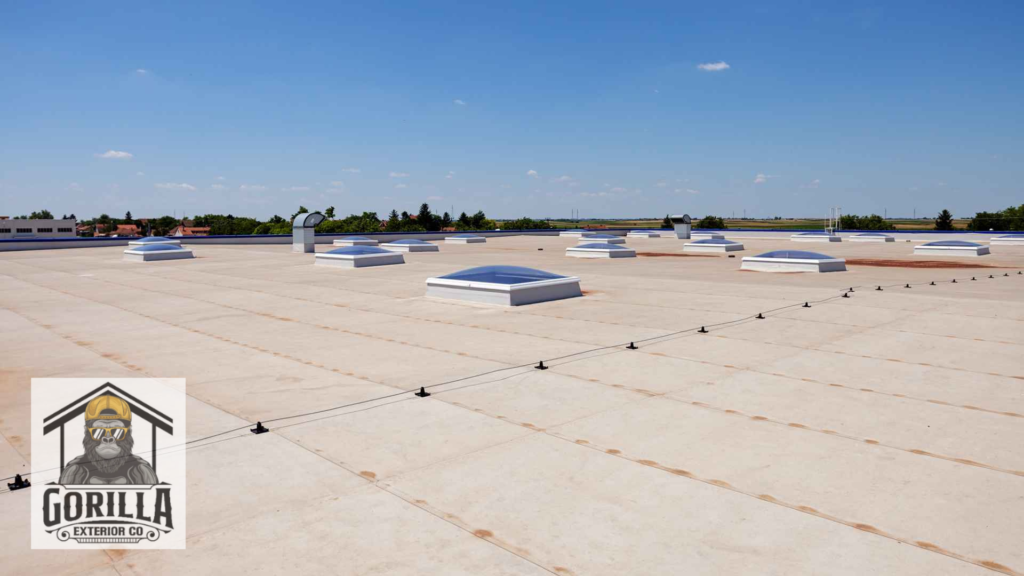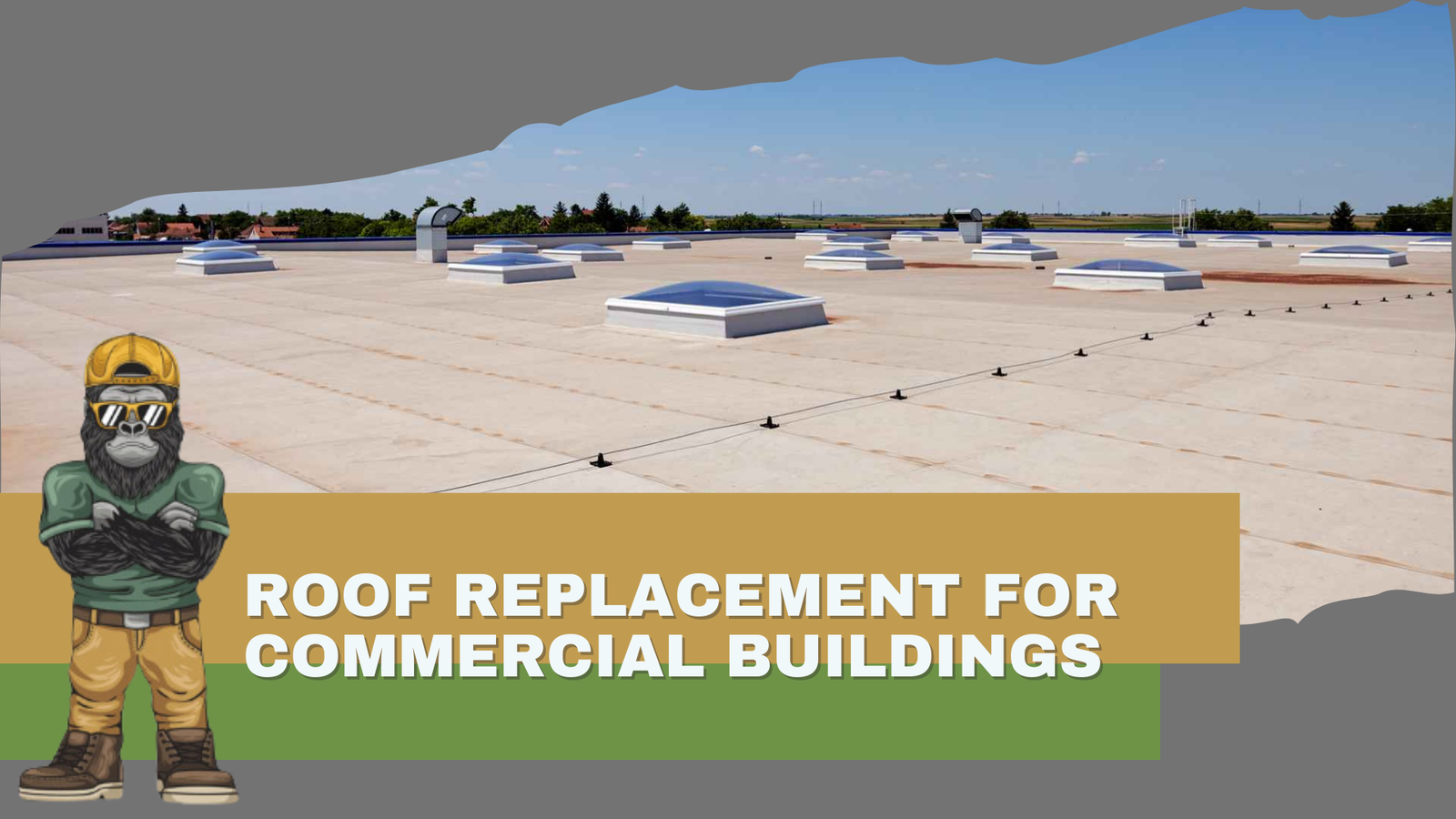Understanding the Importance of Commercial Roof Replacement: What Business Owners Should Know
A commercial roof replacement is a major investment that requires careful planning and execution. Whether you own a retail store, office building, warehouse, or industrial facility, the condition of your roof directly impacts energy efficiency, safety, and overall business operations. Ignoring signs of roof deterioration can lead to water damage, structural issues, and costly repairs.
As a business owner, understanding when to replace your commercial roof, the best materials to use, and how to choose a contractor is crucial. In this guide, we’ll explore the key considerations for commercial roof replacement, ensuring your business remains protected for years to come.
Signs Your Commercial Roof Needs Replacement


A well-maintained commercial roof can last for decades, but every roof eventually reaches the end of its lifespan. Identifying the warning signs early can help you avoid expensive emergency roof repairs.
1. Frequent Leaks and Water Damage
If your building experiences persistent leaks, water stains on ceilings, or moisture buildup, your roof may no longer be providing adequate protection. Over time, water intrusion can lead to mold growth, insulation damage, and compromised structural integrity.
2. Blistering or Bubbling on the Roof Surface
Flat commercial roofs often develop blisters, bubbles, or cracks due to trapped moisture and prolonged exposure to the elements. This can weaken the roofing membrane, making your building vulnerable to leaks.
3. Increasing Energy Bills
A deteriorating roof can allow heat or cold air to escape, forcing your HVAC system to work harder. If you notice a sudden increase in your energy bills, your roof’s insulation or reflective properties may no longer be effective.
4. Roof Membrane Damage or Ponding Water
For buildings with TPO, EPDM, or modified bitumen roofs, damage to the membrane can compromise the roof’s ability to repel water. Additionally, if water pools on your flat roof for more than 48 hours, it can lead to premature roof failure.
5. Roof Age Exceeding Its Lifespan
Most commercial roofing systems have a lifespan of 20 to 50 years, depending on the material. If your roof is approaching or exceeding this range, it’s time to consider a replacement.
Choosing the Right Roofing Material for Your Commercial Building
Selecting the right commercial roofing material depends on factors such as climate, budget, durability, and energy efficiency. Here’s a comparison of the most popular options:
1. TPO (Thermoplastic Polyolefin) Roofing
Lifespan: 20-30 years
Pros:
✔ Highly reflective, improving energy efficiency
✔ Resistant to UV rays, mold, and chemicals
✔ Cost-effective and durable
Cons:
✘ Susceptible to punctures from sharp objects
✘ Requires professional installation
2. EPDM (Ethylene Propylene Diene Monomer) Roofing
Lifespan: 25-35 years
Pros:
✔ Extremely durable and flexible
✔ Weather and temperature-resistant
✔ Cost-effective for large buildings
Cons:
✘ Dark color absorbs heat, increasing cooling costs
✘ Vulnerable to punctures if not reinforced
3. Modified Bitumen Roofing
Lifespan: 20-30 years
Pros:
✔ Excellent waterproofing capabilities
✔ Can withstand extreme temperature changes
✔ Strong impact resistance
Cons:
✘ More expensive than TPO and EPDM
✘ Requires professional installation with heat application
4. Metal Roofing
Lifespan: 40-60 years
Pros:
✔ Superior durability and longevity
✔ Fire-resistant and energy-efficient
✔ Minimal maintenance required
Cons:
✘ Higher upfront cost
✘ Can be noisy during heavy rain or hailstorms
5. Built-Up Roofing (BUR)
Lifespan: 20-40 years
Pros:
✔ Multiple layers provide excellent durability
✔ Superior waterproofing
✔ Can handle heavy foot traffic
Cons:
✘ Heavier than other materials, requiring additional structural support
✘ Longer installation time
The Commercial Roof Replacement Process
Replacing a commercial roof involves several steps to ensure a successful and long-lasting installation.
1. Roof Inspection and Assessment
A professional roofing contractor will conduct a detailed inspection to determine the extent of damage and recommend the best replacement options.
2. Choosing the Right Roofing System
Based on your building structure, climate, and budget, the contractor will help you choose the most suitable roofing material.
3. Obtaining Permits and Compliance
Commercial roofing projects must adhere to local building codes and regulations. Your contractor should handle the necessary permits to ensure compliance.
4. Removing the Old Roof
Depending on the condition of your existing roof, a complete tear-off or roof overlay may be required.
5. Installing the New Roof
The new roofing system is installed, ensuring proper sealing, drainage, and insulation for maximum durability.
6. Final Inspection and Maintenance Plan
After installation, a final inspection is conducted, and a maintenance plan is recommended to maximize your roof’s lifespan.
Cost Considerations for Commercial Roof Replacement
The cost of a commercial roof replacement varies based on:
- Roof size and complexity
- Choice of material
- Labor and installation costs
- Additional features such as insulation and drainage systems
On average, commercial roof replacement costs range from $5 to $12 per square foot. Investing in high-quality materials and expert installation ensures long-term savings by reducing repair and maintenance costs.
How to Choose a Reliable Commercial Roofing Contractor
Selecting a qualified commercial roofing contractor is critical to the success of your project. Look for the following:
✔ Licensed and insured professionals
✔ Proven experience in commercial roofing
✔ Positive customer reviews and references
✔ Clear and transparent pricing
✔ Strong warranty coverage
FAQs About Commercial Roof Replacement
1. How often should a commercial roof be replaced?
Most commercial roofs last 20 to 50 years, depending on the material. Regular inspections and maintenance can extend their lifespan.
2. How long does it take to replace a commercial roof?
The timeframe depends on roof size, material, and weather conditions, but most commercial roof replacements take several days to a few weeks.
3. Can I install a new roof over an existing one?
Yes, in some cases, a roof overlay (installing a new roof over the existing one) is an option, but it depends on the condition of the current roof and building codes.
4. How can I extend the life of my commercial roof?
Routine inspections, cleaning gutters, repairing minor damages, and ensuring proper drainage can help extend your roof’s lifespan.
5. Does insurance cover commercial roof replacement?
Insurance may cover roof damage caused by storms, fire, or accidents, but not normal wear and tear. Always check your policy for details.
Protect Your Business with a Quality Roof Replacement
A commercial roof replacement is a significant investment that requires careful planning and expert execution. Choosing the right materials, hiring a trusted contractor, and maintaining your roof properly will ensure long-term protection, energy savings, and durability.
If your commercial roof is showing signs of wear and tear, leaks, or aging, now is the time to consult a professional roofing expert Denver, PA to discuss your options.





